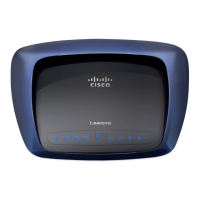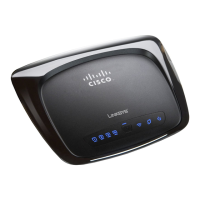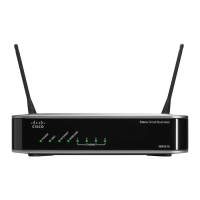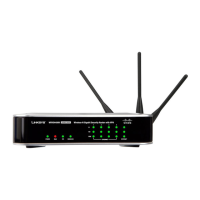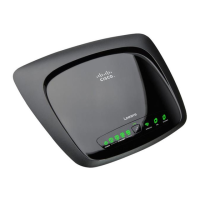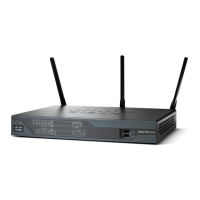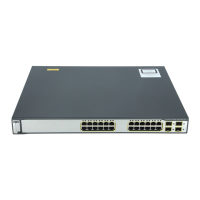REVIEW DRAFT #1—CISCO CONFIDENTIAL
1-11
Cisco WRP500 Administration Guide
Chapter 1 Product Overview and Deployment Guidelines
Remote Provisioning
Factory reset of voice settings: Use one of the following methods:
–
Option 1: Log on to the configuration utility, and then click Administration tab > Factory
Defaults. Next to Restore Voice Factory Defaults, click Yes. Then click Save Settings to begin
the operation.
–
Option 2: Connect an analog phone to the Phone 1 or Phone 2 port. Press **** to access the
Interactive Voice Response menu. After you hear the greeting, press 73738 for factory reset.
Listen to the prompts and then press 1 to confirm or * to cancel. After you hear “Option
successful,” you can hang up the phone.
Remote Provisioning
Like other Cisco Small Business IP Telephony Devices, the WRP500 provides for secure provisioning
and remote upgrade. Provisioning is achieved through configuration profiles transferred to the device via
TFTP, HTTP, or HTTPS. To configure Provisioning, go to the Provisioning tab in the Configuration
Utility.
Note For complete details, see the Provisioning Guide at the following URL:
www.cisco.com/en/US/docs/voice_ip_comm/csbpvga/ata/provisioning/guide/Cisco_Small_Business_I
P_Telephony_Provisioning_Guide.pdf
Upgrade URL
Remote firmware upgrade is achieved via TFTP or HTTP (firmware upgrades using HTTPS are not
supported). Remote upgrades are initiated by causing the WRP500 to request the upgrade firmware
image by providing a URL for the WRP500 to retrieve the firmware.
Note If the value of the Upgrade Enable parameter in the Provisioning page is No, you cannot upgrade the
WRP500 even if the web page indicates otherwise.
The syntax of the Upgrade URL is as follows:
http://WRP500_ip_address/admin/upgrade?[protocol://][server-name[:port]][/firmware-pathname]
Both HTTP and TFTP are supported for the upgrade operation.
If no protocol is specified, TFTP is assumed. If no server-name is specified, the host that requests the
URL is used as server-name.
If no port specified, the default port of the protocol is used. (69 for TFTP or 80 for HTTP)
The firmware-pathname is typically the file name of the binary located in a directory on the TFTP or
HTTP server. If no firmware-pathname is specified, /spa.bin is assumed, as in the following example:
http://192.168.2.217/admin/upgrade?tftp://192.168.2.251/spa.bin

